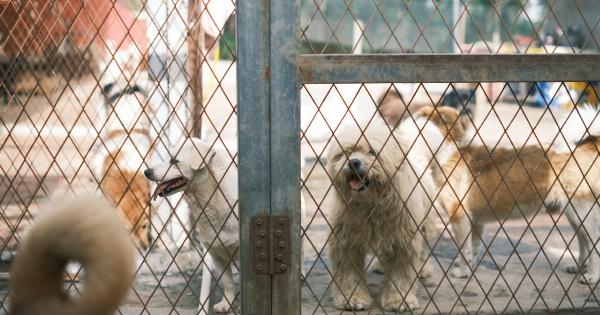Dogs are incredible creatures that have the ability to communicate with us using a combination of verbal and nonverbal cues. While they may not speak our language, they have their own unique ways of expressing their emotions, needs, and desires.
As dog owners and enthusiasts, it’s important for us to understand and interpret these cues to strengthen our bond with our furry friends. In this article, we will delve into the fascinating world of canine communication and explore how we can decipher their messages.
Understanding Verbal Communication
.Verbal communication in dogs primarily consists of barks, growls, whines, and howls. Each of these sounds has its own meaning and can convey a range of emotions or intentions.
It’s crucial to note that the context in which these vocalizations occur is key to understanding their true intent.
Barks
.Barks are perhaps the most common form of vocalization in dogs. Different types of barks can indicate various things. For example, a short and sharp bark may signify alertness or danger.
On the other hand, a long and continuous bark may be an expression of excitement or a call for attention. Additionally, high-pitched barks often indicate fear or anxiety, while low and repetitive barks may represent frustration or a warning.
Growls
.Growls, although often associated with aggression, can also convey other emotions such as fear or pain. It’s essential to pay attention to the accompanying body language to determine the true meaning behind a growl.
A low, rumbling growl with a stiff body may indicate a possible threat or an attempt to claim territory, while a high-pitched or trembling growl could demonstrate fear or discomfort.
Whines
.Whining is typically associated with solicitation or expressing frustration. Puppies often whine to get attention, food, or affection from their owners. Older dogs may whine when they are in pain or distress.
Understanding the context in which the whining occurs is crucial for deciphering its meaning and addressing the underlying issue.
Howls
.Howling is an instinctual behavior in dogs that often serves as a form of long-distance communication. Dogs may howl to communicate their presence, establish territory boundaries, or respond to the howls of other dogs.
Howling can also occur when a dog is lonely or experiencing separation anxiety. By paying attention to the pitch, duration, and frequency of the howl, we can gain insights into a dog’s emotional state.
Decoding Nonverbal Cues
.
Dogs rely heavily on nonverbal cues to communicate with us and other animals. Understanding these cues is essential for successful social interactions and can prevent misunderstandings or potential conflicts.
Here are some key nonverbal cues to look out for:.
Body Language
.A dog’s body language can reveal a wealth of information about its emotional state. Pay attention to the position and movements of their tail, ears, eyes, and mouth to gauge their feelings.
For example, a relaxed and wagging tail, soft eyes, and an open mouth usually signify a friendly and relaxed dog. Conversely, a tucked tail, flattened ears, narrowed eyes, or bared teeth may indicate fear, stress, or aggression.
Facial Expressions
.Dogs have a wide range of facial expressions that can convey various emotions. Just like humans, they can raise their eyebrows, wrinkle their forehead, or contort their mouth to convey happiness, curiosity, fear, or other feelings.
Observing their facial expressions can provide valuable insights into their state of mind.
Posture
.The way a dog positions itself can speak volumes about their attitude and intentions. A relaxed, loose posture indicates a dog that is comfortable and friendly. Conversely, a stiff or tense posture may indicate fear or aggression.
Pay attention to their body weight distribution, height, and overall stance to interpret their posture correctly.
Vocalizations and Body Language Integration
.It’s important to note that verbal and nonverbal cues often work together to communicate a dog’s message. For example, a dog growling with a tucked tail and flattened ears is likely feeling defensive or scared.
On the other hand, a dog barking with a wagging tail and a relaxed body posture may be excited or playful. By considering both verbal and nonverbal cues in conjunction, we can better understand and respond to our dogs’ needs.
Conclusion
.Canine verbal and nonverbal cues are crucial tools for communication between dogs and humans.
By interpreting and understanding these cues, we can develop a stronger bond with our four-legged companions and provide them with the care, attention, and support they need. Remember to consider the context, body language, and vocalizations as a whole to gain a comprehensive understanding of your dog’s emotions and intentions.
By cracking the code of canine communication, we can ensure a harmonious and fulfilling relationship with our beloved pets.






























